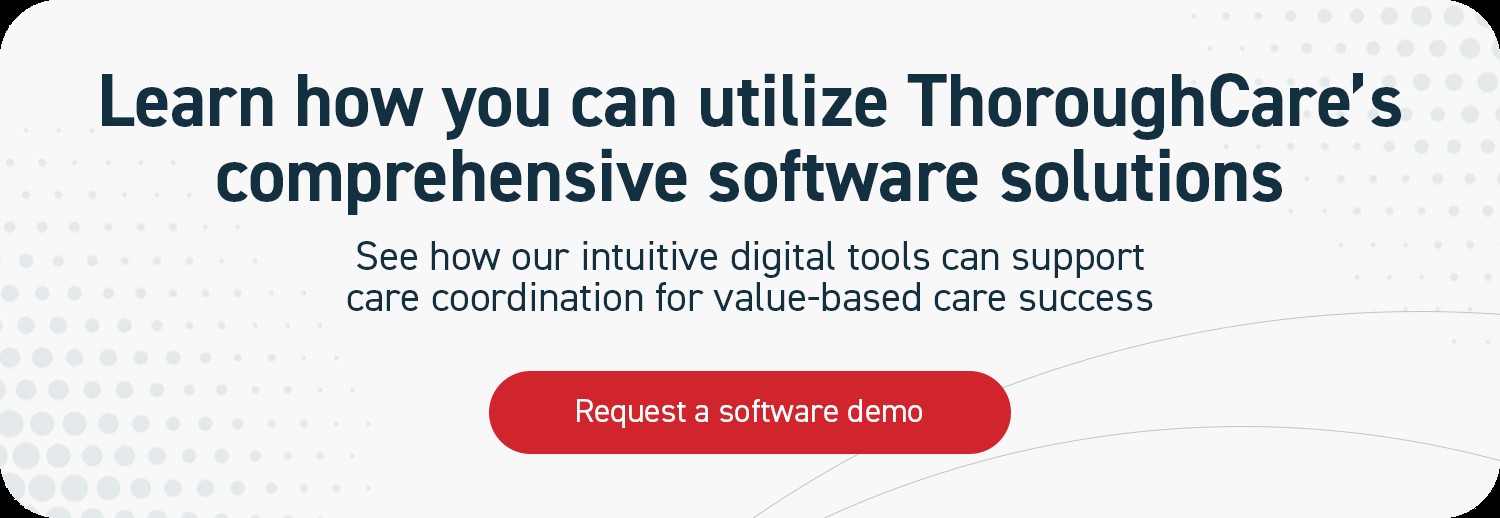Chronic Care Management (CCM) programs are increasingly recognized as vital for modern healthcare practices. You likely understand the fundamental principles of CCM and how these programs can significantly improve patient outcomes and support value-based care initiatives. Moreover, the prevalence of chronic conditions in the United States is undeniable. Statistics from the American College of Rheumatology indicate that approximately 86% of US healthcare expenditures are linked to chronic illnesses.
Adding to this, the Centers for Medicare and Medicaid Services (CMS) estimates that around one in four American adults, including a substantial 70% of Medicare beneficiaries, grapple with two or more chronic conditions. This level of comorbidity not only qualifies them for CCM services but also highlights the extensive need for effective chronic care management.
Given the widespread presence of these conditions, the strategic implementation of a CCM program within your practice can yield substantial benefits, provided it’s executed with precision and expertise.
But what constitutes ‘correct’ implementation?
This article provides a detailed, step-by-step guide on how to successfully implement a CCM program. At ThoroughCare, we specialize in assisting clinics and physician practices nationwide in establishing robust CCM programs. We offer both a dedicated care coordination software solution and comprehensive guidance throughout the implementation journey.
Our experience has given us unique insights into effective strategies, common pitfalls, and the key elements that contribute to a thriving CCM program. Our primary goal is to empower your practice with the knowledge and resources needed to enhance patient health and optimize revenue streams.
Step 1: Develop a Strategic Plan and Build Your Care Team
The initial step is to formulate a comprehensive plan tailored to your practice’s specific needs. This plan should meticulously outline the operational logistics of your CCM program and the necessary resource allocation.
Preparing your staff for their expanded roles is crucial. This includes designating dedicated care managers. CMS mandates that a CCM care manager be either a qualified practitioner or a certified professional, such as:
- Registered Nurse (RN)
- Licensed Practical Nurse (LPN)
- Certified Medical Assistant (CMA)
- Health Coaches (in certain regions)
If your current staffing capacity does not accommodate the demands of a CCM program, you might need to consider hiring a dedicated care manager. Your strategic plan must also address essential operational aspects, including patient enrollment management, obtaining informed consents, scheduling protocols, and other pertinent CCM-related activities.
 A healthcare professional discussing a care plan with a patient, emphasizing the importance of patient-centered care in chronic condition management.
A healthcare professional discussing a care plan with a patient, emphasizing the importance of patient-centered care in chronic condition management.
Step 2: Identify and Effectively Recruit Eligible Patients
The next critical step is to pinpoint and engage patients who are eligible for CCM participation.
To reiterate, patient eligibility criteria stipulate that individuals must have two or more chronic conditions that meet the following specifications:
- The condition is expected to persist for at least 12 months or until the patient’s death.
- The condition significantly elevates the patient’s risk of mortality, acute exacerbation or decompensation, or functional decline.
Strategies for Identifying Eligible Patients
Leverage your Electronic Health Record (EHR) system to efficiently identify potential candidates. Conduct EHR searches to locate patients diagnosed with two or more qualifying chronic conditions and who have been seen by a provider within the preceding 12 months. If a patient hasn’t been seen within this timeframe, they should not be automatically disqualified. Instead, consider recommending an Annual Wellness Visit (AWV) as a preliminary step, followed by CCM enrollment.
Ideally, your EHR should offer functionalities to filter and sort patient lists, generating actionable reports of eligible individuals. If your EHR lacks these capabilities, investing in a specialized care coordination software solution is highly advisable.
While not mandatory, care coordination software is strongly recommended for the effective management of Medicare programs.
This recommendation stems from the fact that standard EHR systems are not optimally designed to handle the multifaceted requirements of Medicare program management. As we progress through this guide, you’ll recognize that relying solely on your EHR for CCM program management can become inefficient and cumbersome.
Once you have compiled a list of patients meeting CMS’s CCM eligibility criteria, the next step involves prioritizing candidates who would benefit most from the program.
A practical approach for initial implementation is to focus on a select group of prevalent or high-impact diagnoses. Conditions such as diabetes, hypertension, depression, and COPD are excellent starting points due to their commonality and significant impact on patient health.
Furthermore, targeting your Medicare Part B patient population with two or more chronic conditions is strategically sound, given that Medicare Part B typically covers 80% of CCM service costs. It’s also prudent to verify CCM coverage with your billing department or other Medicare replacement/private insurance providers prevalent in your region to understand local coverage specifics.
Effective Patient Recruitment Strategies
With a refined list of eligible patients, the subsequent phase is patient recruitment. Three primary methods can be employed:
Personal In-Office Discussions
Introducing the CCM program during a scheduled in-office visit often yields the highest enrollment success rates. In this setting, clinicians can thoroughly articulate the program’s benefits, address patient inquiries directly, and build trust.
It is considered best practice for the primary care provider or physician to initiate these conversations. Their established patient relationship and credibility often carry significant weight in the patient’s decision to enroll.
Targeted Outreach Campaigns
Some practices choose to conduct outreach campaigns, typically involving personalized letters mailed to eligible patients. These letters should clearly explain the value proposition of the CCM program and extend a formal invitation to participate.
Proactive Phone Calls
Allocating dedicated time for phone calls to eligible patients is another effective recruitment method. During these calls, staff can explain the program, answer questions, and invite enrollment.
Given that ongoing communication with enrolled patients will frequently occur via telephone, establishing a dedicated phone line for your CCM program is advisable. This direct line of communication significantly enhances patient accessibility and contributes to improved patient engagement.
Step 3: Streamlining Patient Enrollment
Having identified eligible patients and successfully recruited participants, the next phase is formal enrollment into your CCM program.
If a patient has agreed to participate in CCM but hasn’t had an in-office visit with their physician within the last 12 months, a visit with the billing practitioner is a prerequisite to enrollment.
Offering an AWV serves as an excellent gateway to introduce patients to your CCM program.
AWVs and CCM programs are naturally synergistic, particularly in managing chronic conditions that require long-term, continuous care.
Formal enrollment necessitates obtaining informed consent from the patient, which can be either verbal or written.
For written consent, a straightforward form, reviewed by both the physician and patient during a face-to-face encounter, is suitable.
This form should comprehensively include:
- An overview of CCM and its availability to the patient.
- A clear statement that participation is voluntary and the patient can opt out at any time.
- A notification that only one provider can bill for CCM services per patient per month.
- Information regarding potential patient co-pays (discussed further below).
- An explanation of permissible health information sharing among relevant healthcare providers.
Patients should sign this consent form after a thorough review with their physician.
Verbal consent is also acceptable. If obtained, meticulously document the date and time of verbal consent for audit preparedness. Accurate records are essential should a Medicare audit occur.
Step 4: Delivering CCM Services and Enhancing Patient Engagement
With patients enrolled, the focus shifts to delivering consistent care coordination.
The paramount initial step is the creation of a patient-centered care plan. This plan should be grounded in a thorough physical, mental, cognitive, psychosocial, functional, and environmental assessment of the patient’s needs.
Provide a copy of this individualized care plan to the patient and share it with other relevant providers to ensure coordinated care.
Utilize the care plan as a roadmap for ongoing care coordination of the patient’s chronic conditions. This continuous management encompasses:
- Regular phone calls and secure digital communication with the patient.
- Seamless coordination among various clinicians, healthcare facilities, community support services, and caregivers involved in the patient’s care.
- Continuous assessment of the patient’s evolving medical, functional, and psychosocial needs through regular updates to the care plan.
- Proactive management to ensure timely receipt of all recommended preventive care services.
- Medication reconciliation, including adherence reviews and potential drug interaction assessments.
To bolster patient engagement in their health management, implementing a patient portal is highly effective. A patient portal empowers patients to access their care plans, fosters enhanced collaboration and communication with their care team, and provides a consistent monthly touchpoint for care interaction.
As previously highlighted, leveraging a care coordination software solution significantly streamlines these processes. Such software facilitates efficient care delivery, meticulous tracking, and comprehensive documentation of all care activities, simplifying coding and billing procedures.
Step 5: Accurate Coding, Billing, and Reimbursement Procedures
To successfully submit claims to the Centers for Medicare & Medicaid Services (CMS), five key elements are required:
- CPT codes specific to each CCM program service you are billing for per patient.
- ICD-10 codes corresponding to each chronic condition being managed under the program.
- Date of service provision.
- Place of service (typically in-office or via telehealth).
- National Provider Identifier (NPI) number of the billing provider.
While not mandatory for claim submission, documenting the assigned care manager for each case is beneficial, particularly in the event of an audit.
For billing accuracy, meticulously calculate the total time spent providing CCM services to each patient monthly.
Follow these four essential steps for monthly billing:
- Verify that all CMS requirements were met for each patient throughout the billing month.
- Submit claims to CMS on a monthly basis.
- Generate and send invoices to patients who receive monthly CCM services, if applicable.
- Confirm there are no conflicting billing codes submitted for the same patient within the billing period.
When billing for CCM, ensure that at least two relevant ICD-10 codes are listed on the claim, reflecting the requirement of managing two or more chronic conditions.
Leveraging Care Coordination Software for Effective CCM Management
To ensure efficient delivery and precise documentation of CCM services, implementing a robust system for program management is essential.
A practical tool like care coordination software is invaluable for securely managing critical program details, preventing oversight, and enhancing overall operational efficiency for your staff and improved patient outcomes.
Care coordination software streamlines patient care plan creation, optimizes staff workflows, and simplifies the complexities of billing processes. ThoroughCare’s software solution is specifically designed to offer these comprehensive functionalities.
Developed with clinical insights, our intuitive platform simplifies the entire CCM process, enabling both your practice and your patients to fully capitalize on the benefits of care management. Our care coordination software solution also supports the integration of complementary wellness services, such as Behavioral Health Integration (BHI) and Remote Patient Monitoring (RPM), expanding your practice’s service offerings and patient care capabilities.
